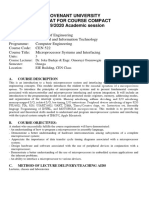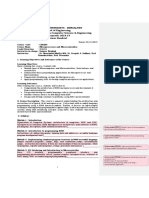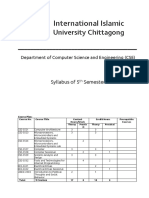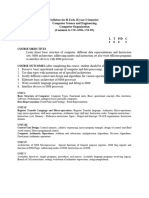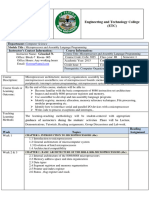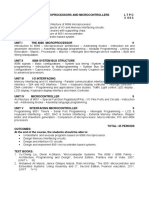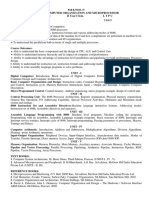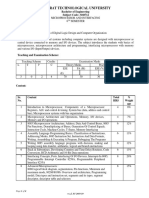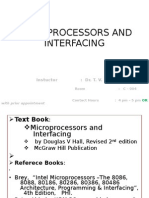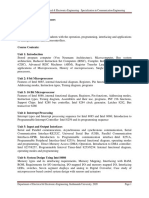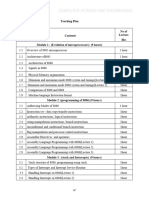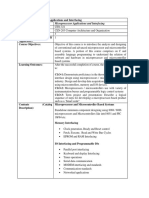0% found this document useful (0 votes)
54 views3 pagesCourse Title CS221 Micro Computer Systems II
CS221 Micro Computer Systems II is a core course focused on microprocessor engineering, covering signal analysis, design, and fabrication of 80x86 microprocessor-based systems. Students will learn to identify internal registers, design interface circuits, and write assembly language codes, with a total of 120 hours of coursework and a credit rating of 12. Prerequisite for this course is CS214 Micro Computer Systems I.
Uploaded by
ezekiel nyamuCopyright
© © All Rights Reserved
We take content rights seriously. If you suspect this is your content, claim it here.
Available Formats
Download as DOCX, PDF, TXT or read online on Scribd
0% found this document useful (0 votes)
54 views3 pagesCourse Title CS221 Micro Computer Systems II
CS221 Micro Computer Systems II is a core course focused on microprocessor engineering, covering signal analysis, design, and fabrication of 80x86 microprocessor-based systems. Students will learn to identify internal registers, design interface circuits, and write assembly language codes, with a total of 120 hours of coursework and a credit rating of 12. Prerequisite for this course is CS214 Micro Computer Systems I.
Uploaded by
ezekiel nyamuCopyright
© © All Rights Reserved
We take content rights seriously. If you suspect this is your content, claim it here.
Available Formats
Download as DOCX, PDF, TXT or read online on Scribd
/ 3



